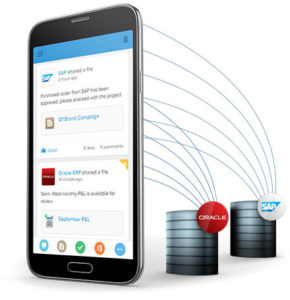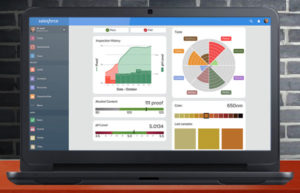
Spreadsheets suffered a body blow on Tuesday, when Salesforce announced new platform functionality. Soon all spreadsheets will be good for is financial analysis. This sounds funny, because the spreadsheet for several decades has been the unofficial IT prototyping tool.
Actually, it was the end-users’ prototyping tool — the default thing they used to capture data when IT was famously too busy maintaining the legacy systems they got from a spaghetti factory.
Creative Thinking
With the introduction of Lightning Components, Lightning App Builder and AppExchange for Components, it’s now easier to build your prototype app — in fact, with these tools, it’s easier than it is to build a spreadsheet.
Salesforce glommed onto “lightning” terminology as a way to convey the idea of fast development, and because it sounds so much better than “blitz.” The idea reminds me of object-oriented programming from 30 years ago, but with much less emphasis on tedious coding and libraries.
Salesforce has brought to market tools that can take a back seat to your creativity. Rather than obsessing about how to do some technical trick, the developer — or increasingly the end user — can think about the business need.
It’s as fundamental as an artist mixing a color without giving it a lot of conscious thought. That’s what’s happening here with components. Let us unpack.
A Whole New World
The more important part of the announcement involves components and what you do with them. Components are sort of like widgets — to some, they share a pedigree of not being terribly well defined. However, for the record, what Salesforce means by a “component” is a reusable building block based on JavaScript.
Components can be simple or complex, and they include such things as e-signatures, compensation calculators, maps, calendars and more — or they can just be single UI elements or microservices with embedded data and logic.
The important point is that components keep you from actually coding, so that you can think about your business. Also, just like spreadsheets, components open up the development world for non-coders.
OK, so the really cool thing is that components will become another category in the AppExchange. They can be built by anyone — and if they can be built, they can be bought and sold.
Of course, you can spend a week building one yourself, but having the functionality available on the AppExchange for pennies (OK, whole dollars) will make everyone think twice when making build vs. buy decisions.
State of the Art
Components come together in the Lightning App Builder, a place (I believe Salesforce refers to it as a “canvas,” in keeping with my art analogy) where a developer goes to assemble (or compose) the business app. I suppose you could think of the canvas as a blank spreadsheet if that helps.
However, the difference between a spreadsheet and a functioning app is huge. It goes without saying that unlike a spreadsheet, a Lightning app has a real database behind it. Plus, as usual with Salesforce, apps built on the platform inherit all of the other Salesforce capabilities — like workflow, Chatter, security schema and everything else.
A few years ago, you could look at the mountain of legacy code and wonder how it could ever be rewritten for handheld devices or replaced to take advantage of all the new capabilities coming on stream. Those capabilities are substantial — because they focus on various aspects of process more than the transaction-oriented applications that are rapidly being replaced do.
The End of Coding?
Thus, the answer to the “how” question above has two parts.
First, we aren’t going to replace those transaction systems. We will supersede them with process support that goes wider and deeper, made possible by prebuilt components and subsystems.
Second, we will do this because the market demands it. No one is waving a flag to that effect, but I don’t think you can be in business in a social, mobile, big data world any more, and not know that if you can’t leverage those things, you will need to find a new job.
Finally, all of this is now possible because we have the ability to generate apps replacing man-centuries of work in hand coding. With this as the fuel of business innovation, I am excited to contemplate where it takes us.
























































It is painfully obvious that Denis is on the SalesForce payroll. Articles such as these do a disservice to those serious about providing open system solutions to customers. SalesForce is not in the business of providing open system type services to anyone let alone customers. It is 100% proprietary and as long as Companies fall for all this hype and extremely expensive prices… well, lets just say I’d love for my Company to compete with anyone who uses solutions that are overpriced and proprietary like SalesForce is. It really isn’t that great of a platform either.